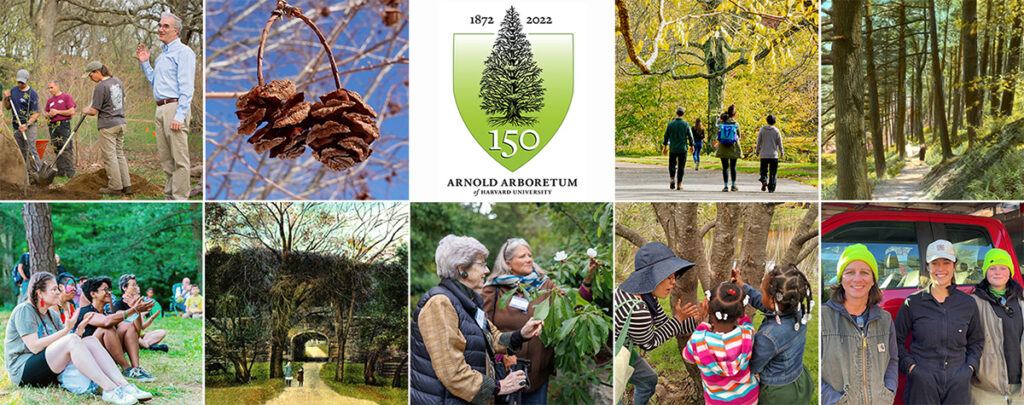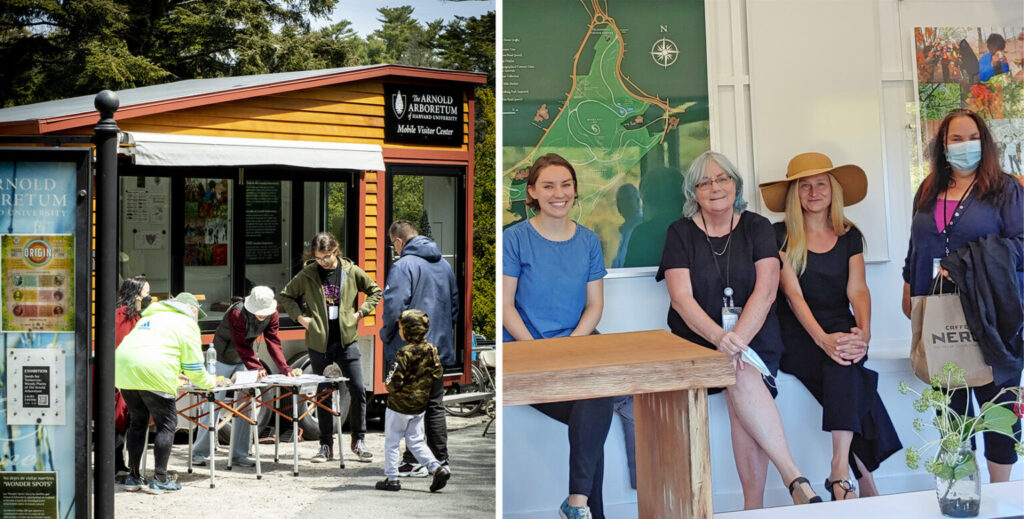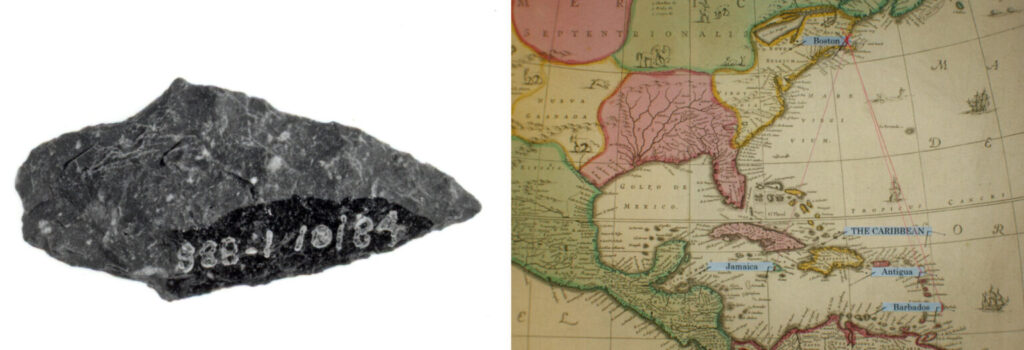Reviewing Participation in Public Programs in 2022

Celebrating 150 Years of Plants and People

In 2022 the Arnold Arboretum of Harvard University celebrated 150 years of collecting, stewarding, and sharing one of the world’s most comprehensive and best documented collections of temperate woody plants in one of Frederick Law Olmsted’s most eminent and best-preserved landscapes. Our Arnold150 webpages share our sesquicentennial highlights, sparking community engagement through timelines, story sharing, capital improvements, and public events.
Connecting with Visitors in the Landscape

To more equitably welcome and connect with visitors across the Arboretum landscape, Public Programs launched the Mobile Visitor Center in September 2021 through the generosity of an Arboretum donor. The MVC provides orientation materials and engagement activities for visitors in the landscape, rotating among the Arboretum’s various entrances, and is designed to provide outreach opportunities in communities beyond our walls.
Image: On left, visitors enjoy resources at the Mobile Visitor Center on Lilac Sunday; on right, Public Programs staff members Amy Heuer, Carena Cremin, Regina Misson, and Ana Eder-Mulhane in the Mobile Visitor Center for it’s opening day in October, 2021.
Rose Lincoln Photographer
Expanding Our Reach Through Online Engagement

With the assistance of the Information Technology Department from the outset of the pandemic, the Arboretum’s Public Programs staff continued its robust plant-centered programming on digital platforms. For adults, virtual programs included interactions with Arboretum scientists and plant experts, and a series of lectures in concert with the Harvard Art Museums. For children, the Field Study Experiences programs transitioned to live virtual forums, reaching several thousand Boston Public School students.
Image: at left, City of Boston Chief of Environment, Energy, and Open Space for the City of Boston, Rev. Mariama White-Hammond, speaks as part of the 2022 Director’s Series lectures; in center, a student shares their nature drawings with educators as part of virtual programming with Boston Public Schools; at right, authors Rolf Diamant and Ethan Carr presented a program as part of celebrations of the 200th birthday of Frederick Law Olmsted.
Creating New Partnerships for Children’s Education

In fall 2021, the Children’s Programs team took steps to resume in-person programming for its Field Study Experiences programs for Boston Public Schools by offering new outdoor science programs specifically designed for Peters Hill. Created in collaboration with the neighboring Sumner School, the programs enabled hundreds of children from Roslindale to learn about ecology within walking distance of their classrooms. In 2022, through donor support, Arboretum educators launched Arboretum Young Scientists, extending the Arboretum’s science programming to students in middle schools.
Image: Sumner School students explore the Peters Hill landscape with Arboretum educators, photo by Nancy Sableski.
Acknowledging Our Past Toward a More Inclusive Future

With the input of a representative of the Massachusett Tribe, the Arboretum created a land acknowledgement statement and supporting web page detailing the over 7000-year history of human use of the land that would become the Arnold Arboretum. In response to the work and findings of the Presidential Committee on Harvard and the Legacy of Slavery—a major initiative focused on researching and day-lighting connections between Harvard and its community to both the institution and economy of slavery—the Arboretum acknowledged the wealth of two major benefactors derived from the labor of enslaved peoples.
Image: At left, a late Archaic Period projectile point of chipped felsite found in the Arboretum landscape; at right, a historical map showing the Triangle Trade of the slavery economy in the 18th and 19th centuries.